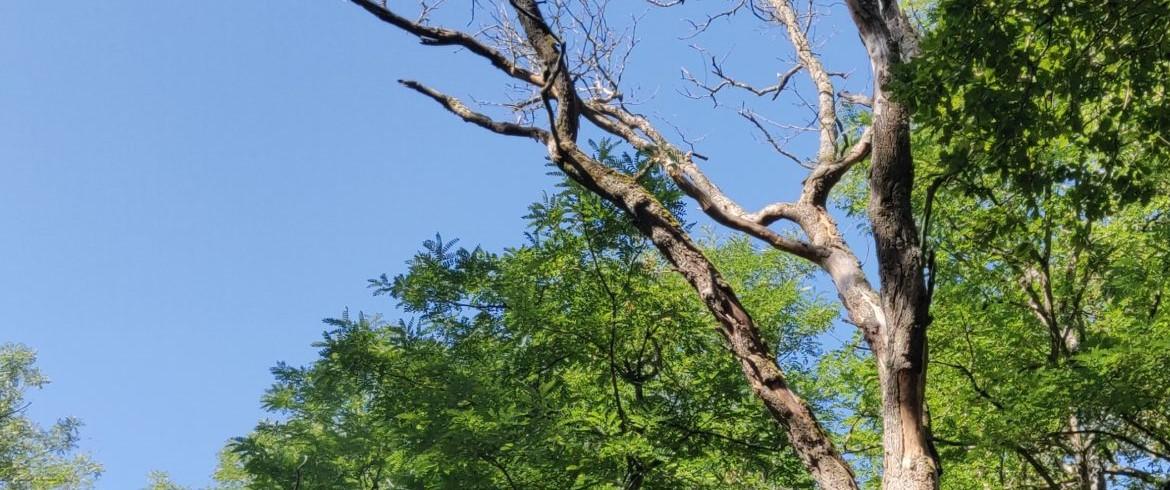The consequences of climate change on trees
Decrease in soil water reserves
Climate chante means more frequent high temperatures. For trees, unlike animals that can take refugee in the shade, the only solution is to transpire ! This is the ability to transform liquid water into water vapour through stomata, tiny pores located on the leaves. This transpiration by trees helps to lower theur temperature, but at the same time considerably reduces the water reserve in the soil, as the tree has to draw on this reserve to regulate its temperature. If this reserve is not replenished by rainfall, this can lead to supply difficulties, as the water reserve diminishes rapidly, from spring onwards when the trees restart their photosynthesis activity.
Leaf loss and embolism
In the event of prolonged drought, and when the tree can no longer regulate its transpiration (lack of water or species with less regulating capacity), trees will go so far as to limit transpiration and therefore their functioning: the stomata will then close up. Leaves dry out, wither and fall prematurely.
More seriously, inside the trunk, the sap column may break at the level of the conducting vessels: air bubbles form, blocking the flow of raw sap, causing an embolism. The leaves suddenly fall, stopping the tree's growth.
Sunburn
During a heatwave, high temperatures can lead to real sunburn on trees, especially if they face south. This is due to an abnormal rise in the temperature of the bark, especially if it is thin (beech, wild cherry, sycamore maple, poplar, etc) or in young trees. The bark dries out, splits and peels, and growth is disrupted because the living wood is damaged.
Increased risk of fire and parasitic attack
When there is a drought, the forest is more susceptible to fire because a number of trees or branches have dried out. This is accentuated by the presence of dry vegetation on the ground, mainly leaf biomass that has fallen due to drought and is highly flammable.
It should be added that in the event of water stress, the vigour and response capacity of the trees weakens considerably: parasites such as insects and fungi will then take advantage of the weakening of the trees to colonise them. This is what we are seeing at the moment, with the bark beetle, a small insect pest, decimating spruce and silver fir forests in eastern France.
More difficult reproduction and changes to vegetation periods
Mild winters may make it more difficult for certain species to reproduce, in the absence of cold weather before spring, which normally allows seeds to beak dormancy.
Buds may also open prematurely in milder winters, and trees may flower and fruit earlier, increasing the risk of late frosts. Other species, on the other hand, may no longer "break bud" (open their buds) due to a lack of cold in winter.
Impact of dieback on biodiversity and landscapes
The dieback that follows these phenomena has a major impact on biodiversity, whose habitats can gradually disappear. The impact on landscapes is also very significant, particularly when entire hectares of forest suffer severe dieback and parasitic attack.
For the local economy, it's also a major blow, as a lot of patient work, often spanning several generations, is wiped out in record time, without nature having had time to adapt.
It's this very point that we'll be looking at in a forthcoming article: nature's and man's solutions for safeguarding the forests.

